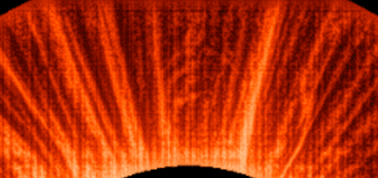4.04.2024
Solar Orbiter to watch for eruptions during total eclipse
On 8 April 2024, a great swath of the United States and Mexico will experience a total solar eclipse, with viewers getting the rare chance to see the Sun’s stunning outer atmosphere.
Solar Orbiter has a front-row seat
On the day of the eclipse, Solar Orbiter will be in a great location. Today, 4 April 2024, marks the spacecraft’s closest approach to the Sun in its egg-shaped orbit, coming just 44 million km from the Sun. These closest approaches happen roughly every six months. During the days before and after, all ten of the spacecraft’s scientific instruments are on high alert.
What’s more, Solar Orbiter will be observing the Sun side-on compared to our perspective on Earth. This means that the structures in the corona (the Sun’s outer atmosphere) that we see at the right-hand side of the Sun from Earth will be seen directly face-on by the spacecraft.
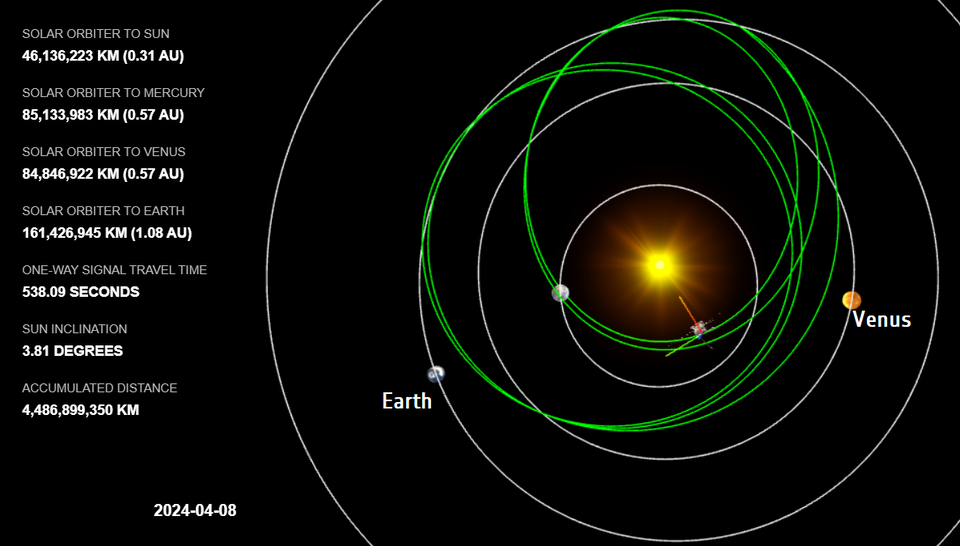
Position of Solar Orbiter on 8 April 2024, with Solar Orbiter’s turns around the Sun shown in green
Eruption watch campaign
Twice in every orbit Solar Orbiter makes around the Sun, so roughly four times a year, the spacecraft makes this 90-degree angle with Earth as it looks at the Sun. During these moments, the Solar Orbiter team may run an ‘eruption watch’ campaign, where they monitor the Sun for bursts of material sent in the direction of Earth.
The next eruption watch campaign will fall precisely around the total solar eclipse, running from 7–9 April. It is led by Clementina Sasso from the Italian National Institute for Astrophysics.
“It’s exciting to think that whilst people on Earth observe the Sun’s corona from one direction, Solar Orbiter will be observing it side-on, ready to capture any fiery outburst that might be heading towards our planet,” says Daniel Müller, ESA Solar Orbiter Project Scientist.
“With observations from the ground and from space, we will for sure be able to combine different points of view of the Sun’s corona,” adds Federico Landini from the Italian National Institute for Astrophysics, member of the Solar Orbiter Metis instrument team. “If there is an eruption event and it occurs in the direction of Earth, even better!”
During the October 2023 eruption watch campaign, Solar Orbiter witnessed at least three big eruptions. Fortunately for us on Earth (or unfortunately, if you were aurora-spotting at the time), none of them headed in our direction.
(Artificial) total eclipse of the Sun
It is a remarkable cosmic coincidence that the Sun is precisely 400 times wider than the Moon, and also 400 times further away. The result is that when the Moon passes in front of the Sun during a total solar eclipse, it precisely blocks out the entire face of the Sun – covering no more and no less.
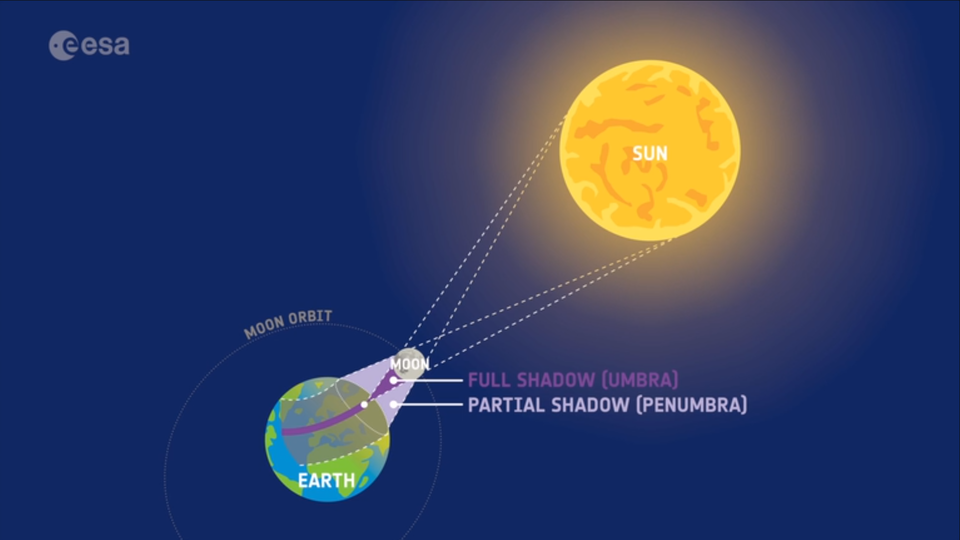
This lets us see the Sun’s wispy corona, which though super-hot, is also very faint, and is therefore usually drowned out by the Sun’s blindingly bright surface. The corona is fascinating for so many reasons, including because it is thought to be the origin of the solar wind.
To study the Sun’s corona, Solar Orbiter creates its own artificial eclipse. Its Metis instrument uses a mirror to reflect the light from the Sun’s surface back into space and only image the surrounding corona in visible and ultraviolet light. Metis is an example of a coronagraph, a specialised instrument designed to block out the light of the Sun.
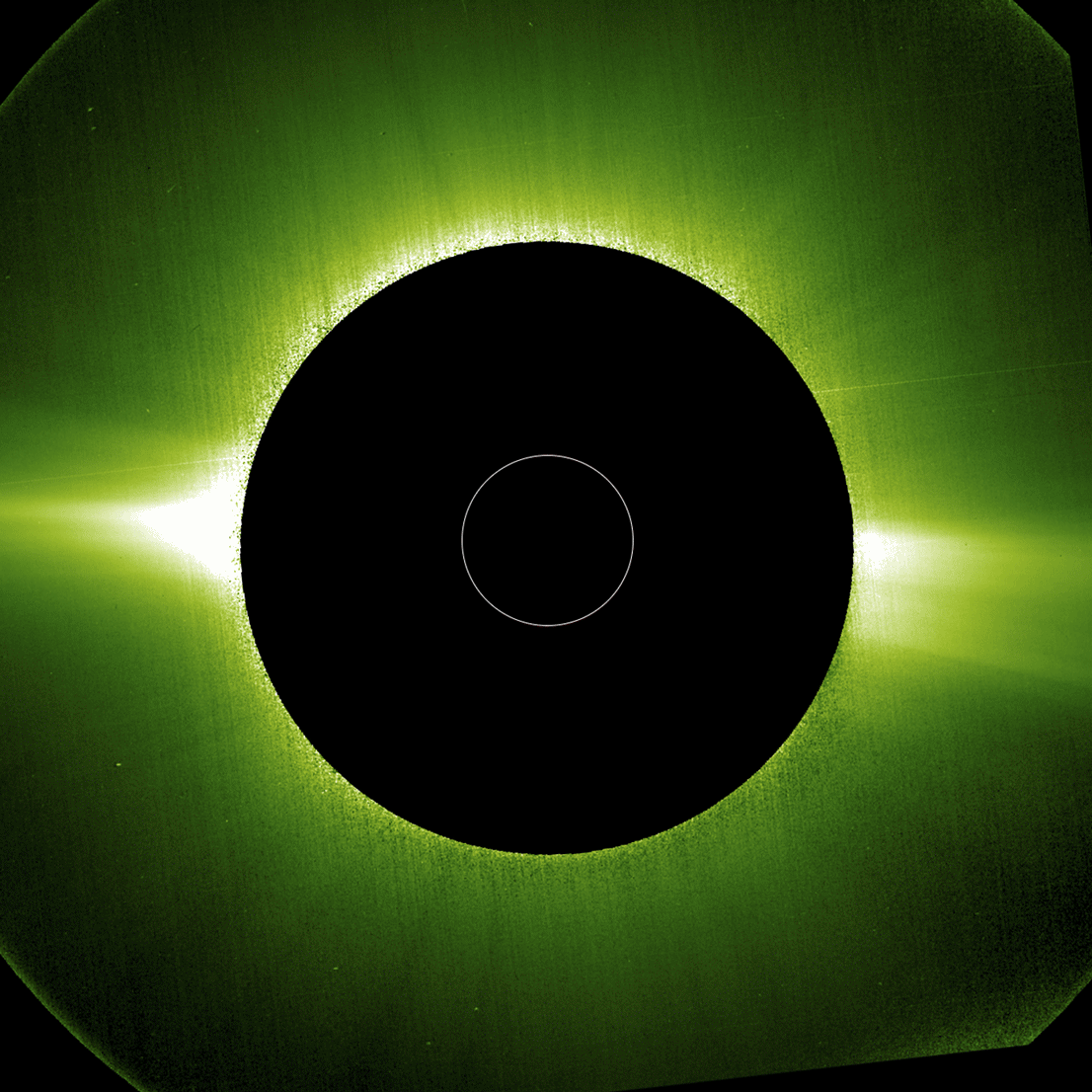
Proba-3 goes one step further
The bigger the distance between the light-blocking disc and the camera photographing the corona, the less light spilt around the coronagraph and the better our view.
ESA’s upcoming Proba-3 mission will be the ultimate coronagraph in space; two separate spacecraft will work together, one blocking the sunlight and the other observing the corona from 144 m away. This precision-flying experiment will let us observe closer to the solar rim than ever before.
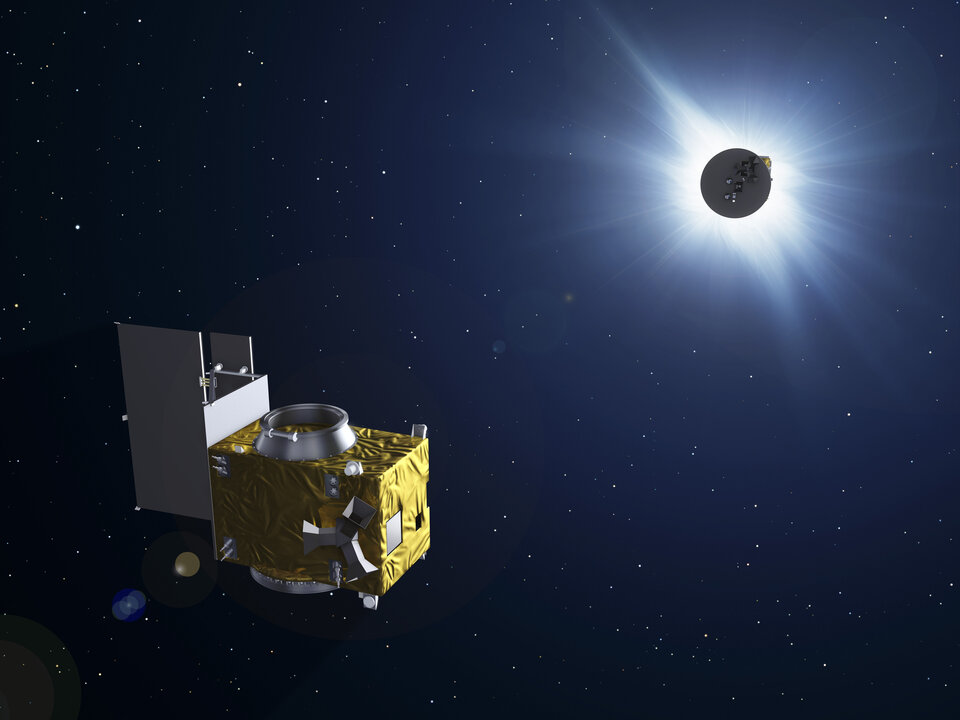
Proba-3’s main goal is to test new technologies and techniques. But if it works, we can expect exciting discoveries about the Sun, which would complement the views from Solar Orbiter.
Proba-3 is due to launch later in 2024. To test out some of the science instruments the spacecraft will carry, a team of Proba-3 scientists and engineers are heading to Mexico during the total solar eclipse. There, they will try out the instruments on the real solar eclipse to ensure that they work in tip top condition in space.
Quelle: ESA


